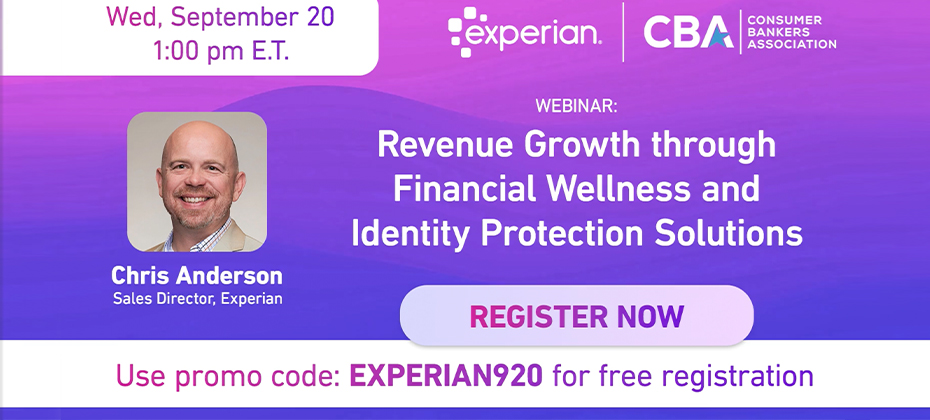Financial Services

Data-driven machine learning model development is a critical strategy for financial institutions to stay ahead of their competition, and according to IDC, remains a strategic priority for technology buyers. Improved operational efficiency, increased innovation, enhanced customer experiences and employee productivity are among the primary business objectives for organizations that choose to invest in artificial intelligence (AI) and machine learning (ML), according to IDC’s 2022 CEO survey. While models have been around for some time, the volume of models and scale at which they are utilized has proliferated in recent years. Models are also now appearing in more regulated aspects of the business, which demand increased scrutiny and transparency. Implementing an effective model development process is key to achieving business goals and complying with regulatory requirements. While ModelOps, the governance and life cycle management of a wide range of operationalized AI models, is becoming more popular, most organizations are still at relatively low levels of maturity. It's important for key stakeholders to implement best practices and accelerate the model development and deployment lifecycle. Read the IDC Spotlight Challenges impeding machine learning model development Model development involves many processes, from wrangling data, analysis, to building a model that is ready for deployment, that all need to be executed in a timely manner to ensure proper outcomes. However, it is challenging to manage all these processes in today’s complex environment. Modeling challenges include: Infrastructure: Necessary factors like storage and compute resources incur significant costs, which can keep organizations from evolving their machine learning capabilities. Organizational: Implementing machine learning applications requires talent, like data scientists and data and machine learning engineers. Operational: Piece meal approaches to ML tools and technologies can be cumbersome, especially on top of data being housed in different places across an organization, which can make pulling everything together challenging. Opportunities for improvement are many While there are many places where individuals can focus on improving model development and deployment, there are a few key places where we see individuals experiencing some of the most time-consuming hang-ups. Data wrangling and preparation Respondents to IDC's 2022 AI StrategiesView Survey indicated that they spend nearly 22% of their time collecting and preparing data. Pinpointing the right data for the right purpose can be a big challenge. It is important for organizations to understand the entire data universe and effectively link external data sources with their own primary first party data. This way, stakeholders can have enough data that they trust to effectively train and build models. Model building While many tools have been developed in recent years to accelerate the actual building of models, the volume of models that often need to be built can be difficult given the many conflicting priorities for data teams within given institutions. Where possible, it is important for organizations to use templates or sophisticated platforms to ease the time to build a model and be able to repurpose elements that may already be working for other models within the business. Improving Model Velocity Experian’s Ascend ML BuilderTM is an on-demand advanced model development environment optimized to support a specific project. Features include a dedicated environment, innovative compute optimization, pre-built code called ‘Accelerators’ that simply, guide, and speed data wrangling, common analyses and advanced modeling methods with the ability to add integrated deployment. To learn more about Experian’s Ascend ML Builder, click here. To read the full Technology Spotlight, download “Accelerating Model Velocity with a Flexible Machine Learning Model Development Environment for Financial Institutions” here. Download spotlight *This article includes content created by an AI language model and is intended to provide general information.

In financial crime, fraudsters are always looking for new avenues to exploit. The mortgage industry has traditionally been a primary target for fraudsters. But with the 30-year fixed-mortgage rate average above 7.19% for the month of September, it has caused an inherent slowdown in the volume of home purchases. As a result, criminals are turning to other lucrative opportunities in mortgage transactions. They have evolved their techniques to capitalize on unsuspecting homeowners and lenders by shifting their focus from home purchases to Home Equity Line of Credit (HELOC), as they see it as a more compelling option. Understanding mortgage fraud Mortgage fraud occurs when individuals or groups intentionally misrepresent information during the mortgage application process for personal gain. The most common forms of mortgage fraud include income misrepresentation, false identity, property flipping schemes, and inflated property appraisals. Over the years, financial institutions and regulatory bodies have implemented robust measures to combat such fraudulent activities. As the mortgage industry adapts to counter established forms of fraud, perpetrators are constantly seeking new opportunities to circumvent detection. This has led to a shift in fraud trends, with fraudsters turning their focus to alternative aspects of the mortgage market. One area that has captured recent attention is HELOC fraud, also known as home equity loan fraud. HELOC fraud: An attractive target for fraudsters What is a HELOC? HELOCs are financial products that allow homeowners to borrow against the equity in their homes, often providing flexible access to funds. While HELOCs can be a valuable financial tool for homeowners, they also present an attractive opportunity for fraudsters due to their unique characteristics. HELOC fraud schemes An example of a home equity loan fraud scheme is a fraudster misrepresenting himself to deceive a credit union call center employee into changing a member’s address and phone number. Three days later, the fraudster calls back to reset the member’s online banking password, allowing the fraudster to login to the member’s account. Once logged in, the fraudster orders share drafts to be delivered to the new address they now control. The fraudster then forges three share drafts totaling $309,000 and funds them through unauthorized advances against the member’s HELOC through online banking platforms. Why HELOCs are becoming the next target for mortgage fraud Rising popularity: HELOCs have gained significant popularity in recent years, enticing fraudsters seeking out opportunities with larger potential payouts. Vulnerabilities in verification: The verification process for HELOCs might be less rigorous than traditional mortgages. Fraudsters could exploit these vulnerabilities to manipulate property valuations, income statements, or other critical information. Lack of awareness: Unlike conventional mortgages, there may be a lack of awareness among homeowners and lenders regarding the specific risks associated with HELOCs. This knowledge gap can make it easier for fraudsters to perpetrate their schemes undetected. Home equity loans do not have the same arduous process that traditional first mortgages do. These loans do not require title insurance, have less arduous underwriting processes, and do not always require the applicant to be physically present at a closing table to gain access to cash. The result is that those looking to defraud banks can apply for multiple HELOC loans simultaneously while escaping detection. Prevention and safeguards There are several preventive measures and fraud prevention solutions that can be established to help mitigate the risks associated with HELOCs. These include: Education and awareness: Homeowners and lenders must stay informed about the evolving landscape of mortgage fraud, including the specific risks posed by HELOCs. Awareness campaigns and educational materials can play a significant role in spreading knowledge and promoting caution. Enhanced verification protocols: Lenders should implement advanced verification processes and leverage data analytics and modeling thorough property appraisals, income verification, and rigorous background checks. Proper due diligence can significantly reduce the chances of falling victim to HELOC-related fraud. Collaboration and information sharing: Collaboration between financial institutions, regulators, and law enforcement agencies is essential to combat mortgage fraud effectively. Sharing information, best practices, and intelligence can help identify emerging fraud trends and deploy appropriate countermeasures. Acting with the right solution Mortgage fraud is a constant threat that demands ongoing vigilance and adaptability. As fraudsters evolve their tactics, the mortgage industry must stay one step ahead to safeguard homeowners and lenders alike. With concerns over HELOC-related fraud rising, it is vital to raise awareness, strengthen preventive measures, and foster collaboration to protect the integrity of the mortgage market. By staying informed and implementing robust safeguards, we can collectively combat and prevent mortgage fraud from disrupting the financial security of individuals and the industry. Experian mortgage is powering advanced capabilities across the mortgage lifecycle by gaining market intelligence, enhancing customer experience to remove friction and tapping into industry leading data sources to gain a complete view of borrower behavior. To learn more about our HELOC fraud prevention solutions, visit us online or request a call. *This article leverages/includes content created by an AI language model and is intended to provide general information.

In today's fast-paced financial landscape, financial institutions must stay ahead of the curve when it comes to account opening and onboarding. Digital account opening, empowering a prospective client to securely and efficiently open a new account, is key to how banks, credit unions and other financial institutions grow their business and expand their portfolio. Regardless of the time, money and other resources a financial institution invests in marketing to the right target prospect and tailoring an attractive offer, it’s worthless if that prospective customer can’t complete the process due to a poor account opening experience. Unhappy customers vote with their feet. A recent Experian study found that of the more 2,000 consumers surveyed who’d opened a new account in the last six months, 37% took their business elsewhere due to a negative account opening experience. The choice of a reliable partner can make all the difference to your account opening and onboarding experience. The right partner must provide your financial institution with access to the freshest credit data; advanced analytics, scores and models to empower you to say yes to the right customers that meet your lending criteria; and industry-leading decision engines that make the best decisions and enable you to provide a seamless customer experience. Moreover, the right partner will also help you in maintaining high levels of security without compromising user experience, all while adhering to regulatory compliance. Recently, Liminal, a leading advisory and market intelligence firm specializing in the digital identity, cybersecurity, and fintech markets, released its highly anticipated Link™ Index Report for Account Opening in Financial Services, which evaluates solution providers in the financial sector, in the areas of compliance and fraud prevention for account opening. The report recognized Experian as a market leader for compliance and fraud prevention capabilities and market execution. Experian’s identity verification and fraud prevention solutions, including CrossCore® and Precise ID®, received the highest score out of the 32 companies highlighted in the report. It found that Experian was recognized by 94% of buyers and 89% identified Experian as a market leader. “We’re thrilled to be named the top market leader in compliance and fraud prevention capabilities and execution by Liminal’s Link Index Report,” said Kathleen Peters, Chief Innovation Officer for Experian’s Decision Analytics business in North America. “We’re continually innovating to deliver the most effective identity verification and fraud prevention solutions to our clients so they can grow their business, mitigate risk and provide a seamless customer experience.” You can access the full report here. To learn more about Experian’s award-winning fraud solutions, visit our identity fraud hub. Download Liminal Link Index Report

Are you looking for ways to make your financial institution more secure without adding unnecessary friction to the customer experience? Automated identity verification is an essential part of this process, safeguarding sensitive consumer information and helping to prevent fraud. This blog post will serve as the ultimate guide to automated identity verification so that you can understand why it's important and how it works. We'll cover all the details, like what automated ID verification is, how authentication software works with identifying documents, why automated identification technology is preferred over manual processes, and tips on implementing automation identity verification solutions into your business practices. What is automated identity verification? Automated identity verification is a secure, efficient process for verifying the identity of individuals or entities. This process is integral in various industries, especially the financial sector, to curb identity theft and fraudulent activities. It operates by using advanced analytics and authentication software that cross-references the provided data with a set of stored information. This technology eliminates manual ID verification, saving time and improving accuracy. ID verification automation uses artificial intelligence and machine learning to compare identifying credentials against various authenticating sources. Automated identity verification also comes into play for employment and income verification. Experian VerifyTM enables businesses through precise, real-time employment and income verification, ultimately helping businesses reduce risk, accelerate conversion and remove friction. For a more comprehensive understanding of automated identity verification, you can visit Experian's Identity Verification Solutions webpage, which provides a deep dive into the intricacies of identity verification, including insights on its importance in modern business operations and how it keeps your business secure. Benefits of automated identity verification for businesses and consumers Automated ID verification has revolutionized the way businesses conduct their operations and interact with customers. For businesses, AIV offers a range of benefits such as: Improved efficiency – businesses can automate the time-consuming process of identity verification, freeing up resources (staff) to focus on other critical tasks. Enhanced security – the technology ensures that customer data is secure and accurate, minimizing fraud risks and/or data breaches. Reduced costs – with the process being faster and more secure, costs are reduced as a byproduct. On the other hand, consumers enjoy a hassle-free experience as they can verify their identity within seconds, without physical documentation. This is essential for today’s consumers who expect frictionless experiences that keep them and their information safe. Data from Experian’s annual U.S. Identity and Fraud Report reflects these sentiments: 37% of consumers moved a new account opening process to another organization because of a poor experience; 95% of consumers say it's important to be repeatedly recognized online by businesses; and 60% of consumers are concerned about their online privacy. With automated identity verification, businesses can build trust, streamline their processes, and ultimately improve their bottom line. Furthermore, automated identity verification is a necessary component for businesses to minimize fraud risks in our evolving digital landscape. Living in an era where cybercrime is rampant, AIV safeguards businesses from potential fraudulent attempts and data breaches that could cause significant financial and reputational damage. From a compliance standpoint, automated identity verification ensures regulatory compliance, which is critical, considering the stringent regulations regarding customer data protection. Non-compliance can lead to severe legal repercussions and financial penalties. For financial institutions, Know Your Customer (KYC) policies must include Customer Identification Programs. Experian can help across the entire customer journey, from onboarding through portfolio management, while reducing risk of non-compliance and providing seamless authentication. Common challenges of automated identity verification As more companies turn to artificial intelligence and automation to deliver superior customer service experiences, the challenges businesses face have multiplied. One of the most common issues is ensuring identity proofing and accurate information protection within their networks. Although account takeover prevention has become more advanced, fraudsters still use increasingly sophisticated methods to circumvent it. As such, businesses must continuously develop new strategies to overcome these challenges, ensuring that their AI-powered solutions continue to provide reliable and secure user experiences. Types of identity verification solutions As the digital world continues to evolve, automated identity verification solutions have become a crucial part of online interactions. These solutions not only enhance security measures, but also provide faster and more efficient ways of identifying individuals. For instance, facial recognition is one example. Experian’s CrossCore® Doc Capture enables confident identity verification via facial recognition, which scans a person's face and compares it to their identification documents. Another type is voice recognition, which uses speech patterns to verify an identity. Additionally, document verification scans and validates various identification documents, such as driver's licenses and passports. It's essential to choose the most suitable AIV solution for your organization to ensure robust and reliable security measures. How to implement an automated ID verification solution It’s not new news that identity theft and fraud continue to be major concerns, particularly in an increasingly digital-only world. Implementing automated identity verification solutions to safeguard against such threats can seem daunting, particularly for businesses with limited IT resources. However, the benefits of automated ID verification, such as increased accuracy and efficiency, make it a worthwhile investment. When choosing a solution, consider factors such as the level of security provided, ease of implementation and integration with existing systems, and the ability to customize rules and settings. With careful planning and the right solution, , organizations can take a significant step towards improving their security posture and protecting their customers. Best Practices for automated identity verification Automated identity verification presents one way that financial institutions can increase automation. In doing so, organizations can improve accuracy, speed, and security in the verification process. One technique that has proven effective is the use of biometric technology, such as facial recognition and fingerprint scanning, to verify a person's identity. Additionally, utilizing various data sources, such as credit bureaus like Experian and government agencies, can increase the accuracy of verification. Implementing these best practices can not only save time and resources but also enhance customer experience by providing a seamless and secure verification process. In summary, automated identity verification is a vital tool for businesses and consumers to enhance their safety and security when engaging with customers. Automated identity verification streamlines customer processes across the lifecycle by eliminating manual checks and lengthy delays. As technology continues to evolve, it’s important for organizations to remain mindful that the methodologies used within automated identity verification will rapidly change as well. The key is to stay ahead. Automated identity verification solutions offer many advantages for businesses who want to maintain their trustworthiness while staying competitive in an ever-changing market. To learn more about Experian’s automated identity verification solutions, visit our website. Learn More *This article includes content created by an AI language model and is intended to provide general information.

Changes in your portfolio are a constant. To accelerate growth while proactively identifying risk, you’ll need a well-informed portfolio risk management strategy. What is portfolio risk management? Portfolio risk management is the process of identifying, assessing, and mitigating risks within a portfolio. It involves implementing strategies that allow lenders to make more informed decisions, such as whether to offer additional credit products to customers or identify credit problems before they impact their bottom line. Leveraging the right portfolio risk management solution Traditional approaches to portfolio risk management may lack a comprehensive view of customers. To effectively mitigate risk and maximize revenue within your portfolio, you’ll need a portfolio risk management tool that uses expanded customer data, advanced analytics, and modeling. Expanded data. Differentiated data sources include marketing data, traditional credit and trended data, alternative financial services data, and more. With robust consumer data fueling your portfolio risk management solution, you can gain valuable insights into your customers and make smarter decisions. Advanced analytics. Advanced analytics can analyze large volumes of data to unlock greater insights, resulting in increased predictiveness and operational efficiency. Model development. Portfolio risk modeling methodologies forecast future customer behavior, enabling you to better predict risk and gain greater precision in your decisions. Benefits of portfolio risk management Managing portfolio risk is crucial for any organization. With an advanced portfolio risk management solution, you can: Minimize losses. By monitoring accounts for negative performance, you can identify risks before they occur, resulting in minimized losses. Identify growth opportunities. With comprehensive consumer data, you can connect with customers who have untapped potential to drive cross-sell and upsell opportunities. Enhance collection efforts. For debt portfolios, having the right portfolio risk management tool can help you quickly and accurately evaluate collections recovery. Maximize your portfolio potential Experian offers portfolio risk analytics and portfolio risk management tools that can help you mitigate risk and maximize revenue with your portfolio. Get started today. Learn more

The importance of financial wellness and identity protection solutions cannot be overstated. With the increase in financial scams and the ever-changing landscape of the digital world, it is imperative to stay up-to-date with the latest trends and technologies that can help safeguard your consumers’ financial future. Experian will host an exclusive digital sales event in partnership with the Consumer Bankers Association (CBA) and Experian Partner Solutions on this topic. Join Experian’s Director of Sales, Chris Anderson, on September 20 at 1:00 p.m. ET/10:00 a.m. PT to discover the power of credit education and identity protection while learning how to drive revenue, engagement, retention, and new business within your consumer base. Three critical components to driving revenue by empowering consumers: Critical credit education tools: Credit is an integral part of our lives, and yet many people do not fully understand how credit works or how to improve it. Webinar attendees will learn about credit education tools that can help their customers improve their credit scores and make informed financial decisions. These tools can also enable financial institutions to better serve their customers by understanding their needs and providing them with appropriate solutions, fostering greater loyalty. Technologies for identity protection: Identity theft is a growing problem, with many individuals and businesses falling victim to fraud and other scams online. Experian Partner Solutions offers a suite of identity protection tools that can monitor and provide real-time accurate alerts, ensuring that your digital presence is secure. Attendees of the webinar will have the opportunity to learn more about these technologies and how they can take proactive steps to protect themselves and their businesses from cyberattacks. Credit-building strategies and identity theft prevention: Building credit takes time and effort, but with the right strategies, it can be done efficiently and effectively. Our expert speaker, Chris Anderson, will share insights into credit-building strategies that can help individuals boost their credit scores as well as ways to prevent identity theft. For more insights and best practices to promote financial wellness at your organization and increase revenue and retention, join our webinar. Register today! Use promo code: EXPERIAN920 for free registration.

From science fiction-worthy image generators to automated underwriting, artificial intelligence (AI), big data sets and advances in computing power are transforming how we play and work. While the focus in the lending space has often been on improving the AI models that analyze data, the data that feeds into the models is just as important. Enter: data-centric AI. What is a data-centric AI? Dr. Andrew Ng, a leader in the AI field, advocates for data-centric AI and is often credited with coining the term. According to Dr. Ng, data-centric AI is, ‘the discipline of systematically engineering the data used to build an AI system.’1 To break down the definition, think of AI systems as a combination of code and data. The code is the model or algorithm that analyzes data to produce a result. The data is the information you use to train the model or later feed into the model to request a result. Traditional approaches to AI focus on the code — the models. Multiple organizations download and use the same data sets to create and improve models. But today, continued focus on model development may offer a limited return in certain industries and use cases. A data-centric AI approach focuses on developing tools and practices that improve the data. You may still need to pay attention to model development but no longer treat the data as constant. Instead, you try to improve a model's performance by increasing data quality. This can be achieved in different ways, such as using more consistent labeling, removing noisy data and collecting additional data.2 Data-centric AI isn't just about improving data quality when you build a model — it's also part of the ongoing iterative process. The data-focused approach should continue during post-deployment model monitoring and maintenance. Data-centric AI in lending Organizations in multiple industries are exploring how a data-centric approach can help them improve model performance, fairness and business outcomes. For example, lenders that take a data-centric approach to underwriting may be able to expand their lending universe, drive growth and fulfill financial inclusion goals without taking on additional risk. Conventional credit scoring models have been trained on consumer credit bureau data for decades. New versions of these models might offer increased performance because they incorporate changes in the economic landscape, consumer behavior and advances in analytics. And some new models are built with a more data-centric approach that considers additional data points from the existing data sets — such as trended data — to score consumers more accurately. However, they still solely rely on credit bureau data. Explainability and transparency are essential components of responsible AI and machine learning (a type of AI) in underwriting. Organizations need to be able to explain how their models come to decisions and ensure they are behaving as expected. Model developers and lenders that use AI to build credit risk models can incorporate new high-quality data to supplement existing data sets. Alternative credit data can include information from alternative financial services, public records, consumer-permissioned data, and buy now, pay later (BNPL) data that lenders can use in compliance with the Fair Credit Reporting Act (FCRA).* The resulting AI-driven models may more accurately predict credit risk — decreasing lenders' losses. The models can also use alternative credit data to score consumers that conventional models can't score. Infographic: From initial strategy to results — with stops at verification, decisioning and approval — see how customers travel across an Automated Loan Underwriting Journey. Business benefit of using data-centric AI models Financial services organizations can benefit from using a data-centric AI approach to create models across the customer lifecycle. That may be why about 70 percent of businesses frequently discuss using advanced analytics and AI within underwriting and collections.3 Many have gone a step further and implemented AI. Underwriting is one of the main applications for machine learning models today, and lenders are using machine learning to:4 More accurately assess credit risk models. Decrease model development, deployment and recalibration timelines. Incorporate more alternative credit data into credit decisioning. AI analytics solutions may also increase customer lifetime value by helping lenders manage credit lines, increase retention, cross-sell products and improve collection efforts. Additionally, data-centric AI can assist with fraud detection and prevention. Case study: Learn how Atlas Credit, a small-dollar lender, used a machine learning model and loan automation to nearly doubled its loan approval rates while decreasing its credit risk losses. How Experian helps clients leverage data-centric AI for better business outcomes During a presentation in 2021, Dr. Ng used the 80-20 rule and cooking as an analogy to explain why the shift to data-centric AI makes sense.5 You might be able to make an okay meal with old or low-quality ingredients. However, if you source and prepare high-quality ingredients, you're already 80% of the way toward making a great meal. Your data is the primary ingredient for your model — do you want to use old and low-quality data? Experian has provided organizations with high-quality consumer and business credit solutions for decades, and our industry-leading data sources, models and analytics allow you to build models and make confident decisions. If you need a sous-chef, Experian offers services and has data professionals who can help you create AI-powered predictive analytics models using bureau data, alternative data and your in-house data. Learn more about our AI analytics solutions and how you can get started today. 1DataCentricAI. (2023). Data-Centric AI.2Exchange.scale (2021). The Data-Centric AI Approach With Andrew Ng.3Experian (2021). Global Insights Report September/October 2021.4FinRegLab (2021). The Use of Machine Learning for Credit Underwriting: Market & Data Science Context. 5YouTube (2021). A Chat with Andrew on MLOps: From Model-Centric to Data-Centric AI *Disclaimer: When we refer to “Alternative Credit Data," this refers to the use of alternative data and its appropriate use in consumer credit lending decisions, as regulated by the Fair Credit Reporting Act. Hence, the term “Expanded FCRA Data" may also apply in this instance and both can be used interchangeably.

The Federal Reserve (Fed) took a big step towards revolutionizing the U.S. payment landscape with the official launch of FedNow, a new instant payment service, on July 20, 2023. While the new payment network offers advantages, there are concerns that fraudsters may be quick to exploit the new real-time technology with fraud schemes like automated push payment (APP) fraud. How is FedNow different from existing payment networks? To keep pace with regions across the globe and accelerate innovation, the U.S. created a alternative to the existing payment network known as The Clearing House (TCH) Real-Time Payment Network (RTP). Fraudsters can use the fact that real-time payments immediately settle to launder the stolen money through multiple channels quickly. The potential for this kind of fraud has led financial regulators to consider measures to better protect against it. While both FedNow and RTP charge a comparable fee of 4.5 cents per originated transaction, the key distinction lies in their governance. RTP is operated by a consortium of large banks, whereas FedNow falls under the jurisdiction of the Federal Reserve Bank. This distinction could give FedNow an edge in the market. One of the advantages of FedNow is its integration with the extensive Federal Reserve network, allowing smaller local banks across the country to access the service. RTP estimates accessibility to institutions holding approximately 90% of U.S. demand deposit accounts (DDAs), but currently only reaches 62% of DDAs due to limited participation from eligible institutions. What are real-time payments? Real-time payments refer to transactions between bank accounts that are initiated, cleared, and settled within seconds, regardless of the time or day. This immediacy enhances transparency and instills confidence in payments, which benefits consumers, banks and businesses.Image sourced from JaredFranklin.com Real-time payments have gained traction globally, with adoptions from over 70 countries on six continents. In 2022 alone, these transactions amounted to a staggering $195 billion, representing a remarkable year-over-year growth of 63%. India leads the pack with its Unified Payments Interface platform, processing a massive $89.5 billion in transaction volume. Other significant markets include Brazil, China, Thailand, and South Korea. The fact that real-time payments cannot be reversed promotes trust and ensures that contracts are upheld. This also encourages the development of new methods to make processes more efficient, like the ability to pay upon receiving the goods or services. These advancements are particularly crucial for small businesses, which disproportionately bear the burden of delayed payments, amounting to a staggering $3 trillion globally at any given time. The launch of FedNow marks a significant milestone in the U.S. financial landscape, propelling the country towards greater efficiency, transparency, and innovation in payments. However, it also brings a fair share of challenges, including the potential for increased fraud. Are real-time payments a catalyst for fraud? As the financial landscape evolves with the introduction of real-time payment systems, fraudsters are quick to exploit new technologies. One particular form of fraud that has gained prominence is authorized push payment (APP) fraud. APP fraud is a type of scam where fraudsters trick individuals or businesses into authorizing the transfer of funds from their bank accounts to accounts controlled by the fraudsters. The fraudster poses as a legitimate entity and deceives the victim into believing that there is an urgent need to transfer money. They gain the victim's trust and provide instructions for the transfer, typically through online or telephone banking channels. The victim willingly performs the payment, thinking it is legitimate, but realizes they have been scammed when communication halts. APP fraud is damaging as victims authorize the payments themselves, making it difficult for banks to recover the funds. To protect against APP fraud, it's important to be cautious, verify the legitimacy of requests independently, and report any suspicious activity promptly. Fraud detection and prevention with real-time payments Advances in fraud detection software, including machine learning and behavioral analytics, make unusual urgent requests and fake invoices easier to spot — in real time — but some governments are considering legislation to ensure more support for victims. For example, in the U.K., frameworks like Confirmation of Payee have rolled out instant account detail checks against the account holder’s name to help prevent cases of authorized push payment fraud. The U.K.’s real-time payments scheme Pay.UK also introduced the Mule Insights Tactical Solution (MITS), which tracks the flow of fraudulent transactions used in money laundering through bank and credit union accounts. It identifies these accounts and stops the proceeds of crimes from moving deeper into the system – and can help victims recover their funds. While fraud levels related to traditional payments have slowly come down, real-time payment-related fraud has recently skyrocketed. India, one of the primary innovators in the space, recorded a 23% rise in fraud related to its real-time payments system in 2022. The same ACI report stated that the U.S., making up only 1.2% of all real-time payment transactions in 2022, had, for now, avoided the effects. However, “there is no reason to assume that without action, the U.S. will not follow the path to crisis levels of APP scams as seen in other markets.” FedNow currently has no specific plans to bake fraud detection into their newly launched technology, meaning the response is left to financial institutions. Fight instant fraud with instant answers Artificial Intelligence (AI) holds tremendous potential in combating the ever-present threat of fraud. With AI technologies, financial institutions can process vast amounts of data points faster and enhance their fraud detection capabilities. This enables them to identify and flag suspicious transactions that deviate from the norm, mitigating identity risk and safeguarding customer accounts. The ability of AI-powered systems to ingest and analyze real-time information empowers institutions to stay one step ahead in the battle against account takeover fraud. This type of fraud, which poses a significant challenge to real-time payment systems, can be better addressed through AI-enabled tools. With ongoing monitoring of account behavior, such as the services provided by FraudNet, financial institutions gain a powerful weapon against APP fraud. In addition to behavioral analysis, location data has emerged as an asset in the fight against fraud. Incorporating location-based information into fraud detection algorithms has proven effective in pinpointing suspicious activities and reducing fraudulent incidents. As the financial industry continues to grapple with the constant evolution of fraud techniques, harnessing the potential of AI, coupled with comprehensive data analysis and innovative technologies, becomes crucial for securing the integrity of financial transactions. Taking your next step in the fight against fraud Ultimately, the effectiveness of fraud prevention measures depends on the implementation and continuous improvement of security protocols by financial institutions, regulators, and technology providers. By staying vigilant and employing appropriate safeguards, fraud risks in real-time payment systems, such as FedNow, can be minimized. To learn more about how Experian can help you leverage fraud prevention solutions, visit us online or request a call. *This article leverages/includes content created by an AI language model and is intended to provide general information.

This article was updated on September 8, 2023. Prescreen, prequalification and preapproval. The terms sound similar, but lenders beware. These credit solutions are quite different, and regulations vary depending on which product is utilized. Let’s break it down… What is prescreen? Perhaps the most reliable mailbox tenant, thick envelopes splashed with “limited time offer” or other flashy designations offering various card and credit products – otherwise known as prescreen offers – are a mainstay in many households. Prescreen is a process that happens behind-the-scenes where a lender screens a consumer’s credit to determine whether to extend a firm offer of credit. The process takes place without the consumer’s knowledge and without any negative impact to their credit score. For lenders and financial institutions, credit prescreen is a way to pick and choose the criteria of the consumers you want to target for a particular offer – often in the form of better terms, interest rates or incentives. Typically, a list of consumers meeting specific credit criteria is compiled by a Credit Reporting Agency, like Experian, and then provided to the requesting lending institutions or their mailing service. In other words? Increase response rates and conversion by targeting the right consumers and eliminating unqualified prospects. Additionally, prescreening consumers also reduces high-risk accounts, targeting the best prospects to reach them at the right time with the right offer for their needs. Gone are the days of batch-and-blasting. It’s expensive and a challenge for constantly limited marketing budgets. Prescreen decreases acquisition and mailing costs by segmenting a lender’s prospect list. In one case, a lender identified more than 40 thousand loans, representing $466 million in loan growth opportunities, after using digital prescreen. Governed by the Fair Credit Reporting Act (FCRA), lenders initiating prescreen campaigns for credit products must also adhere to certain rules. What qualifies one of these campaigns? A firm offer of credit An inquiry posting is required (though it is a “soft” inquiry) Consumers also have the option to opt out of preapproved and prescreen credit offer lists In addition to acquisitions via direct mail, there are various types of prescreen tailored to the multiple channels where marketing takes place in today’s world. For example, Instant Prescreen can increase new account acquisitions by performing the preapproval process in seconds, while the customer is on your website, on the phone with you or at your business. Similar to how you might screen calls on your cell phone by letting them go to your voicemail inbox or screen candidates’ resumes before inviting them for an interview for an open position at your company, a prescreened credit offer is not much different. Focusing on your audience that is most likely to respond to your offers is an easy way to increase your ROI and should be considered a best practice when it comes to your marketing efforts. What is prequalification? Prequalification, on the other hand, is a consumer consent-based credit screening tool where the consumer opts-in to see which credit products they may be qualified for in real time at the point of contact. Unlike a prescreen which is initiated by the lender, the prequalification is initiated by the consumer. In this instance, envision a consumer visiting a bank and inquiring about whether they would qualify for a credit card. During a prequalification, the lender can explore if the consumer would be eligible for multiple credit products – perhaps a personal loan or HELOC. The consumer can then decide if they would like to proceed with the offer(s). A soft inquiry is always logged to the consumer’s credit file, and the consumer can be presented with multiple credit options for qualification. No firm offer of credit is required, but adverse action may be required, and it is up to the client’s legal counsel to determine the manner, content, and timing of adverse action. When the consumer is ready to apply, a hard inquiry must be logged to the consumer’s file for the underwriting process. With Experian’s Prequalification, you can match prospective customers with the right loan products at the point of contact, allowing you to increase approval rates and ROI. How will a prequalification or prescreen invitation/offer impact a consumer’s credit report? Inquiries generated by prequalification offers will appear on a consumer’s credit report. For “soft” inquiries, in both prescreen and prequalification instances, there is no impact to the consumer’s credit score. However, once the consumer elects to proceed with officially applying for and/or accepting a new line of credit, the hard inquiry will be noted in the consumer’s report, and the credit score may be impacted. Typically, a hard inquiry subtracts a few points from a consumer’s credit score, but only for a year, depending on the scoring model. Learn more about Prescreen | Learn more about Prequalification

Consumer debt topped $17 trillion in the first quarter of 2023 — an increase of almost $3 trillion compared to 20191 — with challenging inflation levels, increases in consumer demand and low unemployment levels leading consumers to spend.2 A significant portion of mortgages, auto loans and leases, credit card debt and student loans aren't paid on time. Recent data reveals that 2.6 percent of accounts in the U.S. are delinquent1, with 175 million consumer credit reports showing past-due accounts.3 More debt means more pressure on collection agencies, requiring effective strategies to collect on delinquent accounts. Implementing effective debt collection strategies is especially crucial in the face of challenges like staff shortages, regulatory pressures and the declining success of outbound calling.4 The approach to successful debt collection has changed. Debt collectors and agencies that implement these debt collection techniques and debt recovery tools can improve their performance and bottom line. Debt collection techniques that work Leverage data Outdated approaches to collections ignore consumer contact preferences. Research shows that credit card customers with overdue balances prefer to be contacted via email or text (SMS) over phone calls. Among those with low credit scores and balances under $1,000, 56% preferred emails compared to 18% who preferred to be contacted about their delinquent debt over the phone.5 Data analytics allow you to segment customers based on the amount owed, payment histories, credit scores and past behaviors. This information makes it easier to target those most likely to repay their debt and offer personalized, pre-approved debt solutions. Customers with delinquent debt who preferred digital contact over traditional channels, like phone and mail, were up to 30% more likely to make a payment when debt collectors made contact through a digital channel.4 By leveraging data and analytics, you can create a contact management strategy that increases efficency and profitability. Embrace automation Using digital tools can help streamline the debt collection process. Automation, data, analytics and artificial intelligence (AI) make it easier to create customer profiles and enhance account prioritization.4 Incorporating self-service debt collection options is also essential. Customers want to learn about their options, set up their payment terms and repayment schedules and address their debt at a convenient time via their preferred platform. Digital approaches can be helpful when recovering payments on accounts that are more than 30 days overdue. Research shows that 73% of customers contacted via digital channels for overdue accounts made at least a partial payment compared with just 50% who were contacted via traditional channels.6 Overall, digital-first approaches have been linked to a 25% increase in the resolution of accounts that are more than 30 days past due, a 15% reduction in collections cost and customer engagement levels that are five times higher than traditional collections methods.7 Investments in automation and other digital tools are necessary to replace outdated methods of debt collection that don’t put customers first or place an extra burden on staff. Prioritize the customer experience Leveraging data for customer segmentation is not the only way debt collectors can increase recovery rates. Delivering personalized debt solutions that are proactive, fair and customer-focused is also essential to achieving higher recovery returns.5 Predictive analytics provide insight into customer behavior, making it easier to identify those who need additional support and allowing debt collectors to be responsive to their needs.5 Collections used to be a linear process, but with customer migration to digital — with 64% of consumers using more than four devices per day — collectors need to rethink their approach.8 Consumers expect convenient interactions and relevant communications. Debt collectors that prioritize omnichannel communications can make debt repayment more convenient, resulting in improved customer retention. Remain compliant Digital tools have made it easier for debt collectors to connect with consumers, but legal compliance is still essential. In 2021, the Consumer Finance Protection Bureau (CFPB) passed Regulation F (Reg F) to govern electronic communications for debt collections. The regulations state that electronic communication, including email, text messages and social media, are allowed with direct consent from the consumer; limits on call frequencies do not apply to electronic communications but contacting consumers at inconvenient times and general harassment are still prohibited. Opt-out notices that are clear and prominent are required in all electronic communications.9 Predictive analytics and process automation can also play a role in minimizing regulatory risk by reducing gaps in the contact strategy and helping debt collectors avoid fines. Debt collectors face significant challenges in recovering delinquent debt. A digital-first strategy that prioritizes the customer experience while remaining compliant is essential. Why partner with Experian Increased automation, self-service processes and individualized approaches allow you to focus on accounts with the greatest recovery potential while minimizing charge-offs and ensuring compliance. Implementing an efficient and effective collections prioritization strategy can require a lot of work, but you don’t have to go at it alone. Experian offers various debt collection solutions that can help optimize processes and free up your organization’s resources and agents’ time. Learn more about our debt collection techniques 1Federal Reserve Bank of New York. “Quarterly Report on Household Debt and Credit." 2Experian. “Average Consumer Debt Levels Increase in 2022."Published February 24, 2023. Accessed July 31, 2023.3Consumer Financial Protection Bureau. “Market Snapshot: An Update on Third-Party Debt Collections Tradelines Reporting.” Published February 2023. Accessed July 31, 2023.4McKinsey & Company. “Going digital in collections to improve resilience against credit losses.” Published April 29, 2019. Accessed July 31, 2023.5EY. “Five ways banks can transform their collections processes.” Published November 19, 2020. Accessed July 31, 2023.6McKinsey & Company. “The customer mandate to digitize collections strategies." Published July 29, 2019. Accessed July 31, 2023.7McKinsey & Company. “Holistic customer assistance through digital-first collection.” Published May 21, 2021. Accessed July 31, 2023.8Consumer Finance Protection Bureau. “1006.6 Communications in connection with debt collection." Published November 30, 2021. Accessed July 31, 2023

In the fast-paced world of lending and financial services, digital income verification processes play a crucial role in assessing customer eligibility and mitigating risk. However, not all verification methods are created equal. Let's delve into the differences between instant, permissioned, and manual income and employment verification, and their unique characteristics, benefits, and drawbacks. Instant verification: Real-time insights for seamless decision-making Instant employment and income verification is a game-changer in the lending industry. It provides immediate insights into a customer's financial information, allowing lenders to make real-time decisions. This real-time access to data streamlines the decision-making process, enabling lenders to deliver a seamless and frictionless customer experience. The advantages of instant employment and income verification include: Speed and efficiency: Instant verification eliminates the time-consuming process of manually gathering and analyzing data. This enables lenders to expedite loan approvals, reducing customer waiting times significantly. Enhanced user experience: By delivering real-time results, instant verification enhances the overall customer experience. Customers can complete their applications quickly and effortlessly, leading to increased satisfaction and higher conversion rates. Reduced risk: Real-time verification allows lenders to assess applicant information promptly, maintaining the security and integrity of lending processes. Permissioned verification: Empowering customers in their digital experience Permissioned verification gives customers the ability to grant access to their financial information directly from their payroll or bank accounts. This method is valuable because it keeps customers within their digital experience, eliminating the need for manual document submission or authentication. The benefits of permissions verification include: Convenience and speed: By granting permissioned access, customers can automate income verification and avoid the hassle of uploading or submitting pay stubs manually. This saves time and effort, resulting in a faster verification process. Increased coverage and reduced abandonment: Permissioned verification ensures a higher coverage rate by minimizing the potential for customer abandonment during the application process. Since the information is retrieved seamlessly, customers are more likely to complete the application without frustration. Privacy and control: Customers retain control over their data by explicitly granting permission for access. This enhances transparency and empowers individuals to manage their financial information securely. Manual Verification: A last resort with high friction Manual verification is a traditional method that involves time-consuming and costly processes. It requires lenders to manually collect, review, and verify documents provided by the customer. This method should be reserved as a last-ditch effort when instant and permissioned verification options are not feasible. There are several drawbacks to manual verification, including: Time-consuming: Manual verification involves significant manual labor, which leads to longer processing times. This delays loan approvals and can negatively impact the customer experience. High cost: The labor-intensive nature of manual verification incurs higher operational costs for lenders. These costs can potentially trickle down to customers in the form of higher fees. Increased friction: Customers must go through the inconvenience of gathering and submitting physical documents, potentially hindering the overall loan application process. Level-up your verification experience The differences between instant, permissioned, and manual verification are important to understand. As technology continues to evolve, instant and permissioned verification methods are poised to become the norm, transforming lending processes and fostering greater efficiency and customer satisfaction. Lenders must embrace these innovative verification methods to stay ahead in the competitive financial landscape and provide an exceptional digital income verification experience for their customers. To learn how Experian can help you transform your verification experience, visit us as experian.com/verify. *This content has been created by an AI language model and is intended to provide general information.

The state of digital banking is a story of fragmentation and technology that's often outdated or poorly integrated. Customer journeys are often suboptimal, and multiple layers of technological solutions often translate to problems like poor data hygiene, lack of regulatory compliance and missed opportunities. In addition, the use of legacy software can make it challenging to integrate up-to-date methods such as AI analytics solutions. However, demand on both the front and back ends for better digital services and more-efficient processes is driving banks to take on digital transformations that will help them stay competitive in an evolving technological landscape. Customers expect a frictionless, personalized and highly functional digital experience. To match strength with digital-native competitors, banks and lenders must transform how their organizations do business. What is digital transformation, and what does it mean for banks and lenders? A comprehensive digital transformation strategy is more than just investing in new digital tools. It's about rebuilding the structure and infrastructure of your business so that online and digital services and processes form the core of your competencies and offerings. Digital transformation is an ongoing journey rather than an end goal. It's a continuous process that iterates as you steadily improve and streamline operations and integrate new and improved technologies. One of the key aspects of digital transformation in banking is better gathering and leveraging of data. Banks, especially larger ones with a longer business history, possess large quantities of data that may be siloed or poorly utilized. By improving how they collect, analyze and make use of data, banks and financial institutions can enhance their decision-making abilities and engage with consumers in a more authentic, personalized way. Perhaps most important, digital transformation is customer-centric. While upgrading, merging and integrating back-end technologies and data solutions is a key component of the process, it's all done with the customer experience top of mind. Centralizing, streamlining and modernizing digital operations help to create a seamless, secure and highly targeted customer journey. The core pillars of digital transformation Multiple core pillars are involved in undergoing a successful digital transformation. Each of these should be integrated into a comprehensive strategy that considers the transformation as an integrated process, rather than a series of individual projects. In fact, one common error banks make when upgrading their digital infrastructure and offerings is failing to coordinate digital initiatives. A true digital transformation is holistic, resulting in apps, infrastructure, digital systems and customer experience platforms that are all part of one coherent, consistent approach. Data: Data is at the heart of digital transformation. It's through maximizing and optimizing usable data that financial institutions can truly make an impact on their ability to reach and connect with target consumers. Using data the right way means prioritizing security and privacy while taking advantage of opportunities to improve consumer targeting and engagement and personalization of offers. Analytics: Data can't do its job if it's not interpreted in a way that makes sense for your business. Quality analytics software and comprehensive analysis are what turn a set of disparate data points into usable information that informs smart decision-making and improves KPIs. Automation: Machine learning is improving by leaps and bounds, and it's only going to get more useful for businesses looking to increase the efficiency of their sales, marketing and engagement efforts. AI solutions are no longer a fringe tool but are quickly becoming part of the mainstream and a key component of digital strategies. Customers: With the array of digital tools available today, it's easy to lose sight of the main purpose of your business — connecting with people. Customers today expect digital engagement experiences that feel personalized and real, which is why a consistent, appealing digital customer journey should be top of mind in any digital transformation strategy. How can banks benefit? New, digitally native fintech solutions abound in the contemporary landscape. Overall, they tend to be highly competent when it comes to making the most of state-of-the-art tools like artificial intelligence, mobile apps and blockchain. By combining their brand longevity with a well-executed digital transformation, traditional banks can capitalize on their established reputations by reaching consumers with compelling offerings that utilize and are based on best-in-class digital tools and data analysis. Digital transformation in banking can have numerous benefits. For one, operations will be more streamlined. For another, enhanced security will make customers feel more secure while minimizing losses from fraud. In addition, integrating top-of-the-line data and analysis will result in better overall decision-making. The ultimate goal? Boosting lead generation and conversion rates and improving customer onboarding while reducing churn, thereby maximizing the efficiency of budget spend across multiple departments, from marketing to customer service. Get started with Experian Implementing a digital transformation that truly improves your business can be a daunting task, but it's achievable with the right partner. Experian's connectable and configurable solutions and technology can help drive your digital transformation. With offerings like our cloud platform solutions, you'll be well-positioned to move forward and take advantage of up-to-date technologies to serve your customers better. Learn more about how you can benefit from the digital transformation in banking. Start your digital transformation journey

An intuitive digital customer experience in banking is more important than ever. Americans swipe, tap or insert their debit and credit cards at supermarkets, gas stations, restaurants, hotels and ATMs, conducting more than 74 million daily transactions.¹ Despite the volume of transactions, just 23% of banking customers give their bank high marks for its range of products, services and financial advice.² A hyper-digital, ever-changing banking industry means that there are more choices for financial service providers than ever before — and customers are taking full advantage of the options. On average, consumers have more than six different financial products and 82% of consumers between the ages of 18 and 24 acquired financial services products from new providers in the past 12 months.³ Digital transformation for banks is more crucial than ever, with some studies showing that 78% of bank customers prefer to access their accounts via a website or mobile app (with less than half of those surveyed ranking branch access as an important feature when shopping for a new checking account).4 Banks must embrace innovative strategies to elevate the banking customer experience in a competitive market. Here are some ways to boost customer retention and drive profitable growth. Rethink processes Complex processes and excessive paperwork needed to open accounts, approve credit cards and process loan applications can frustrate customers. In fact, more than 50% of consumers abandon the digital account opening process if it takes more than three to five minutes.5 Digital transformation initiatives can resolve these issues to improve the customer experience. Banks that leverage solutions, like artificial intelligence and automated data-driven decisioning solutions, to facilitate faster, more streamlined services can reduce friction, expedite processes and decrease wait times, resulting in improved customer satisfaction and retention. Reduce fragmentation Financial services are more fragmented than ever. Retail banking customers often use different providers for their checking and savings accounts, credit cards, investments, mortgages and other banking products. The options to access those accounts are also diverse, with customers choosing from brick-and-mortar branches, websites and mobile devices. Increased fragmentation means that the need to create an omnichannel experience should be top of mind for lenders. Additionally, the current retail banking landscape often fails to reward consumers for loyalty. Fewer than 15% of banks provide comprehensive rewards to those who use a single bank for multiple products or services, even though reducing fragmentation and taking a holistic approach to meeting customer needs can provide a competitive advantage.6 Personalize the digital experience While digital banking has reduced face-to-face interaction between banks and customers,7 consumers still expect a personalized banking experience. Experian has shown that using data analytics can lead to an improved understanding of customer needs and preferences, while customer segmentation enables the creation of targeted marketing campaigns, customized product offerings and tailored financial advice. These efforts towards a more personalized banking experience help increase customer satisfaction and loyalty. Provide more touchpoints An increasing number of branch closures and greater demand for digital banking services mean that just 3% of banking transactions are conducted in person.8 Customers are more willing to use digital channels for services like opening accounts and applying for loans. Banks can promote credit offers and product recommendations via email, social media and mobile banking applications while providing real-time digital customer experiences and prioritizing consistency across channels. Embracing a multichannel approach to marketing can help banks achieve better results, making it easier to cross-sell customers, amplify offers and meet consumer expectations for a personalized digital experience. Go beyond banking The customer experience in banking is about more than deposits, withdrawals and interest payments. Customers want resources and information to improve their financial well-being — and providing it can build trust, improve customer retention and boost revenue. Using digital channels to provide education might be more effective than encouraging appointments with customer service representatives. These tactics can help you: Leverage artificial intelligence to provide educational resources and personalized financial advice. Monitor user transactions for unusual activities and push information about online security or fraud protection. Employ chatbots to provide investment information and credit score monitoring and respond to questions about products ranging from mortgages to credit cards. Enhance your customer retention strategies by focusing on credit education and helping customers at every stage of their financial lives. Deliver a personalized customer experience in banking Globally, banks have invested $124 billion in artificial intelligence, machine learning and other technologies to make retail banking services more efficient and effective.9 Personalization is still imperative, and putting the customer first must remain the highest priority. Achieving those results requires a solid strategy for an improved banking customer experience. Experian leverages customer-level analytics and provides comprehensive solutions to expand digital transformation efforts, drive acquisition and improve customer retention. Learn more about our banking solutions. Learn more ¹Federal Reserve (2023). Commercial Automated Clearinghouse Transactions Processed by the Federal Reserve2,6-9Accenture (2023). Global Banking Customer Study3-4Forbes Advisor (2023). U.S. Consumer Banking Statistics5The Financial Brand (2023). How Credit Card Issuers Are Tackling Application Abandonment

This article was updated on August 24, 2023. The continuous shift to digital has made a tremendous impact on consumer preferences and behaviors, with 81% thinking more highly of brands that offer multiple digital touchpoints. As a result, major credit card issuers are making creative pivots to their credit marketing strategies, from amplifying digital features in their card positioning to promoting partnerships and incentives on digital channels. But as effective as it is to reach consumers where they most frequent, credit card marketing will need to be more customer-centric to truly captivate and motivate audiences to engage. So, what does this innovative period of credit marketing mean for financial institutions? How can these institutions stand out in a competitive, ever-changing market? To target and acquire the right consumers, here are three credit card marketing strategies financial institutions should consider: Maximize share of voice through targeted approaches About half of consumers say personalization is the most important aspect of their online experience. Because today’s consumers are now expecting to engage digitally with brands, it’s important for financial institutions to not only be seen and mentioned on the right digital channels, but to deliver content that will resonate with their specific audiences. To do this, lenders must leverage fresh, comprehensive data sets to gain a more holistic view of consumers. This way, they can create targeted, customer-centric prescreen campaigns, allowing for enhanced personalization and increased response rates. Seek new opportunities to provide value to customers 77% of Gen Zers believe having an established credit history is important to being less financially dependent on their parents. Changes in consumer needs and lifestyles provide great opportunities to deliver value to customers. For example, younger consumers starting their credit journeys may look for brands that offer financial education or tools to help them build credit. Financial institutions that are open to pivoting their strategies to adapt to these needs and behaviors are those that will succeed in attracting new customers and maintaining long-lasting relationships with existing ones. Amplify points of differentiation in their products and marketing Before buying a product, consumers likely want to know more about the items they are purchasing and how they compare to different players in the market. To help set their products apart from other offerings, financial institutions should clearly define their product’s key differentiators and convey them in a personalized and compelling manner. Enhance your credit card marketing campaigns From identifying the right prospects to saturating your targeting criteria with data-rich insights, Experian offers credit marketing solutions to help you level up your campaigns and stand out from the competition. Learn more

"Grandma, it’s me, Mike.” Imagine hearing the voice of a loved one (or what sounds like it) informing you they were arrested and in need of bail money. Panicked, a desperate family member may follow instructions to withdraw a large sum of money to provide to a courier. Suspicious, they even make a video call to which they see a blurry image on the other end, but the same voice. When the fight or flight feeling settles, reality hits. Sadly, this is not the scenario of an upcoming Netflix movie. This is fraud – an example of a new grandparent scam/family emergency scam happening at scale across the U.S. While generative AI is driving efficiencies, personalization and improvements in multiple areas, it’s also a technology being adopted by fraudsters. Generative AI can be used to create highly personalized and convincing messages that are tailored to a specific victim. By analyzing publicly available social media profiles and other personal information, scammers can use generative AI to create fake accounts, emails, or phone calls that mimic the voice and mannerisms of a grandchild or family member in distress. The use of this technology can make it particularly difficult to distinguish between real and fake communication, leading to increased vulnerability and susceptibility to fraud. Furthermore, generative AI can also be used to create deepfake videos or audio recordings that show the supposed family member in distress or reinforce the scammer's story. These deepfakes can be incredibly realistic, making it even harder for victims to identify fraudulent activity. What is Generative AI? Generative artificial intelligence (GenAI) describes algorithms that can be used to create new content, including audio, code, images, text, simulations, and videos. Generative AI has the potential to revolutionize many industries by creating new and innovative content, but it also presents a significant risk for financial institutions. Cyber attackers can use generative AI to produce sophisticated malware, phishing schemes, and other fraudulent activities that can cause data breaches, financial losses, and reputational damage. This poses a challenge for financial organizations, as human error remains one of the weakest links in cybersecurity. Fraudsters capitalizing on emotions such as fear, stress, desperation, or inattention can make it difficult to protect against malicious content generated by generative AI, which could be used as a tactic to defraud financial institutions. Four types of Generative AI used for Fraud: Fraud automation at scale Fraudulent activities often involve multiple steps which can be complex and time-consuming. However, GenAI may enable fraudsters to automate each of these steps, thereby establishing a comprehensive framework for fraudulent attacks. The modus operandi of GenAI involves the generation of scripts or code that facilitates the creation of programs capable of autonomously pilfering personal data and breaching accounts. Previously, the development of such codes and programs necessitated the expertise of seasoned programmers, with each stage of the process requiring separate and fragmented development. Nevertheless, with the advent of GenAI, any fraudster can now access an all-encompassing program without the need for specialized knowledge, amplifying the inherent danger it poses. It can be used to accelerate fraudsters techniques such as credential stuffing, card testing and brute force attacks. Text content generation In the past, one could often rely on spotting typos or errors as a means of detecting such fraudulent schemes. However, the emergence of GenAI has introduced a new challenge, as it generates impeccably written scripts that possess an uncanny authenticity, rendering the identification of deceit activities considerably more difficult. But now, GenAI can produce realistic text that sounds as if it were from a familiar person, organization, or business by simply feeding GenAI prompts or content to replicate. Furthermore, the utilization of innovative Language Learning Model (LLM) tools enables scammers to engage in text-based conversations with multiple victims, skillfully manipulating them into carrying out actions that ultimately serve the perpetrators' interests. Image and video manipulation In a matter of seconds, fraudsters, regardless of their level of expertise, are now capable of producing highly authentic videos or images powered by GenAI. This innovative technology leverages deep learning techniques, using vast amounts of collected datasets to train artificial intelligence models. Once these models are trained, they possess the ability to generate visuals that closely resemble the desired target. By seamlessly blending or superimposing these generated images onto specific frames, the original content can be replaced with manipulated visuals. Furthermore, the utilization of AI text-to-image generators, powered by artificial neural networks, allows fraudsters to input prompts in the form of words. These prompts are then processed by the system, resulting in the generation of corresponding images, further enhancing the deceptive capabilities at their disposal. Human voice generation The emergence of AI-generated voices that mimic real people has created new vulnerabilities in voice verification systems. Firms that rely heavily on these systems, such as investment firms, must take extra precautions to ensure the security of their clients' assets. Criminals can also use AI chatbots to build relationships with victims and exploit their emotions to convince them to invest money or share personal information. Pig butchering scams and romance scams are examples of these types of frauds where AI chatbots can be highly effective, as they are friendly, convincing, and can easily follow a script. In particular, synthetic identity fraud has become an increasingly common tactic among cybercriminals. By creating fake personas with plausible social profiles, hackers can avoid detection while conducting financial crimes. It is essential for organizations to remain vigilant and verify the identities of any new contacts or suppliers before engaging with them. Failure to do so could result in significant monetary loss and reputational damage. Leverage AI to fight bad actors In today's digital landscape, businesses face increased fraud risks from advanced chatbots and generative technology. To combat this, businesses must use the same weapons than criminals, and train AI-based tools to detect and prevent fraudulent activities. Fraud prediction: Generative AI can analyze historical data to predict future fraudulent activities. By analyzing patterns in data and identifying potential risk factors, generative AI can help fraud examiners anticipate and prevent fraudulent behavior. Machine learning algorithms can analyze patterns in data to identify suspicious behavior and flag it for further investigation. Fraud Investigation: In addition to preventing fraud, generative AI can assist fraud examiners in investigating suspicious activities by generating scenarios and identifying potential suspects. By analyzing email communications and social media activity, generative AI can uncover hidden connections between suspects and identify potential fraudsters. To confirm the authenticity of users, financial institutions should adopt sophisticated identity verification methods that include liveness detection algorithms and document-centric identity proofing, and predictive analytics models. These measures can help prevent bots from infiltrating their systems and spreading disinformation, while also protecting against scams and cyberattacks. In conclusion, financial institutions must stay vigilant and deploy new tools and technologies to protect against the evolving threat landscape. By adopting advanced identity verification solutions, organizations can safeguard themselves and their customers from potential risks. To learn more about how Experian can help you leverage fraud prevention solutions, visit us online or request a call